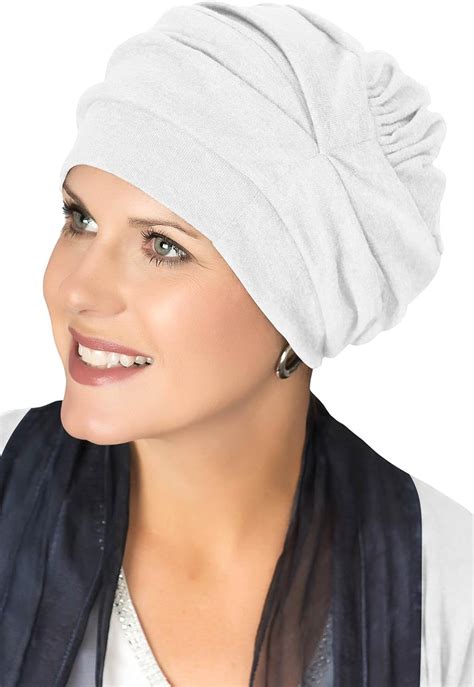Introduction
Head coverings for women have traversed centuries, witnessing transformative shifts in design and purpose. From practical shields against inclement weather to potent symbols of cultural and religious identity, they continue to empower women with protection, style, and a sense of belonging.

Historical Evolution
Ancient Origins:
- 5,000 BCE: Evidence of head coverings in ancient Mesopotamia and Egypt, used for both practical and ceremonial purposes.
- 2,000 BCE: Greek women adorned their heads with veils and kerchiefs, reflecting their modesty and social status.
Religious Symbolism:
- 600 CE: Muslim women begin wearing the hijab, a headscarf that represents faith and submission to God.
- 13th Century: Christian women in medieval Europe adopt the veil as a sign of humility and obedience.
- 19th Century: Sikhs embrace the turban as a sacred symbol of their faith and commitment to equality.
Practical Functions
Head covers offer practical benefits as well:
- Sun Protection: Wide-brimmed hats and scarves shield skin from harmful UV rays, reducing the risk of sunburns and skin cancer.
- Cold Protection: Beanies, hoods, and earmuffs insulate the head and keep it warm in frigid temperatures.
- Hair Management: Hairnets, bandanas, and headscarves help control unruly hair, especially in windy or humid conditions.
Cultural Significance
Head coverings carry profound cultural significance:
- Traditional Attire: In many cultures, head coverings are an integral part of traditional dress, symbolizing identity and community belonging.
- Religious Customs: Head coverings serve as expressions of religious beliefs and practices, such as the hijab in Islam or the kippah in Judaism.
- Fashion Statements: In recent years, head coverings have become popular fashion accessories, adding a touch of style and individuality to outfits.
Types of Head Covers
The sheer diversity of head covers reflects the multifaceted nature of women’s needs and preferences:
- Hats: From elegant wide-brimmed hats to cozy beanies, hats come in various shapes and sizes, offering protection and style.
- Scarves: Silk, cotton, or wool scarves can be worn in countless ways, from loose drapes to sophisticated headwraps.
- Headbands: Headbands, both decorative and functional, keep hair out of the face while adding a touch of color or pattern.
- Beanies: Cozy and warm, beanies are perfect for cold weather and casual outings.
- Head Wraps: Head wraps, made from fabrics such as satin or silk, offer versatility and protection from the elements.
Health Benefits of Head Covers
Aside from their aesthetic and cultural significance, head covers can promote health and well-being:
- Hair Loss Prevention: Scalp coverage provided by head covers can protect hair from the damaging effects of wind, friction, and sun exposure.
- Scalp Protection: Head coverings shield the scalp from sunburns, reducing the risk of skin cancer and premature aging.
- Warmth Regulation: Beanies and head wraps can help maintain body temperature during cold weather, reducing the risk of hypothermia.
Motivations for Wearing Head Covers
Women choose to wear head covers for diverse reasons, including:
- Religious Obligations: Religious beliefs often dictate the wearing of head coverings, representing faith and obedience.
- Cultural Traditions: Head coverings are often deeply ingrained in cultural customs, symbolizing identity and belonging.
- Personal Preference: Many women enjoy the aesthetic appeal and versatility of head coverings, incorporating them into their personal style.
- Practicality: Head coverings provide protection from the elements, shield hair from damage, and manage unruly locks.
Effective Strategies for Choosing Head Covers
To ensure comfort and style, consider these strategies:
- Match Hair Type: Choose fabrics that complement your hair texture and density to prevent slippage or irritation.
- Consider Climate: Opt for breathable materials like cotton or linen for warm climates, while insulated materials like wool or fleece are ideal for cold weather.
- Accessorize: Head coverings can be adorned with embellishments like bows, beads, or tassels to add a personal touch.
- Explore Styles: Experiment with different head cover styles to find what suits your face shape, outfit, and occasion.
Common Mistakes to Avoid
Avoid these common pitfalls to optimize head cover usage:
- Choosing the Wrong Size: Ensure the head cover fits snugly but comfortably to prevent slippage or headaches.
- Neglecting Scalp Health: Wear head covers made from breathable materials that allow for scalp ventilation.
- Over-Tightening: Avoid tying head coverings too tightly, as this can lead to discomfort and hair breakage.
- Ignoring Hygiene: Regularly wash head covers to maintain hygiene and prevent skin irritation.
Innovation and the Future of Head Covers
The future of head coverings holds endless possibilities:
- Smart Head Covers: Head covers equipped with sensors and technology could track health metrics or provide real-time weather updates.
- Sustainable Materials: Head coverings made from eco-friendly materials such as recycled fabrics or plant-based dyes will become increasingly common.
- Personalized Head Covers: Advanced manufacturing techniques will enable the creation of custom-fit head covers tailored to individual preferences and needs.
Conclusion
Head coverings for women have evolved from mere utilitarian objects to multifaceted expressions of culture, faith, and personal style. They empower women with protection, comfort, and a sense of belonging, while safeguarding their health and enhancing their well-being. As innovation continues to push boundaries, the future of head covers promises even greater versatility, inclusivity, and personal expression.
